Balloon Lung
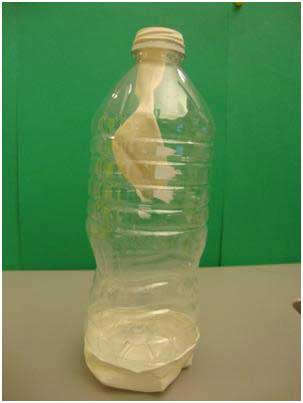
What you Need
- 2 balloons
- a clear plastic water bottle
- scissors
- thumbtack or nail
What to Do
- Take one of the balloons and cut off the bottom part, leaving you with only the top part that may resemble a very small swim cap.
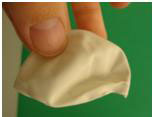
- Using the thumbtack or nail, poke a hole in the bottom. The hole doesn’t need to be too large, about 2 -3 mm.
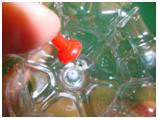
- Cover the bottom of the water bottle and the hole that you just poked with the balloon you cut in step 1.
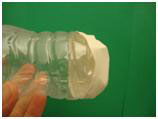
- Take the other balloon and put it inside the bottle. Then fold the bottom of the balloon around the rim of the bottle so the balloon hangs from the top.
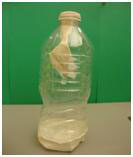
- Pull on the bottom balloon membrane and watch what happens to the balloon inside the bottle.
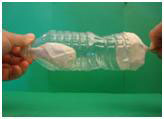
- Let go of the balloon membrane and observe what happens to the balloon inside the bottle.
You should see the balloon inflate as you pull out on the membrane and deflate as you let go of the membrane. What causes this? Is there a ghost blowing into the balloon? Nope! It’s just physics!
What’s Going On?
Did you know that right now you have 14.7 pounds pushing against every square inch of your body! That would be like having every square inch of your body sandwiched between a pair of newborn twins! That’s right, in our atmosphere there is pressure whichis an effect that occurs when a force is applied on a surface. So why don’t you feel like you are “under pressure” all the time? When the inside of you is pushing out as hard as the outside is pushing in, the forces balance and you feel nothing. But what happens if one side stops pushing as hard? Turns out that is how we can breath!
Air pressure comes from teeny-tiny gas particles that are floating around, bumping into each other and bumping into you. The particles will take up whatever space is available to them, until they run into an object or a wall. Inside the plastic water bottle there are a bunch of gas particles bouncing off the walls of the bottle and filling up the space. When you pull down on the balloon membrane, you make the space inside the bottle larger, which gives the particles more room to move around. If the particles have more room to move around, they won’t exert as much pressure on the walls; they won’t bump into things as often. When you increase the volume (the amount of room) you decrease the pressure inside that space, this law of physics is called Boyle’s Law.
As the bottom balloon is pulled down, the volume increases and the pressure decreases. But, the pressures on the inside and outside of the bottle must balance. The only way to keep the pressure inside the bottle the same as the pressure outside of the bottle is to decrease the volume again. The only thing that can move to do that is the balloon on top, so it expands.
This is how are lungs operate. Inside our bodies, at the base of our lungs there is a membrane called the diaphragm. When you inhale, your diaphragm contracts and flattens out, increasing the volume and decreasing the pressure in your chest. Because you have more room air gets sucked in through your mouth and nose and into your lungs, just like it did in the balloon, and then your lungs fill with air. Your lungs are like the balloon and the diaphragm is like the balloon membrane at the base of you bottle. When you exhale your diaphragm relaxes which decreases the volume of your lungs and increases the pressure in your chest. To make sure that your chest doesn’t explode, the air gets forced back out through your mouth and nose.
Try This!
- Try doing the experiment with a larger bottle and larger balloons. Does it change how the inside balloon reacts?
- Try pushing the membrane in. What happens to the balloon inside the bottle?
- Put your hand on your stomach. When you breathe in you should feel your stomach expand. Why does it do this?
More Information











